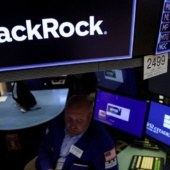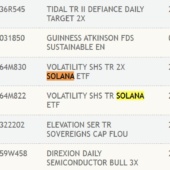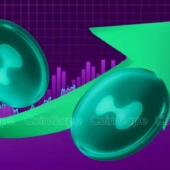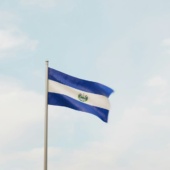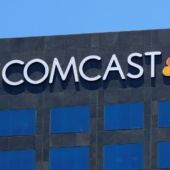Jose Siri, #26 of Major League Baseball’s Houston Astros, steals second base as Dansby Swanson, #7 of the Atlanta Braves, is unable to handle the throw from Travis d’Arnaud, #16, in the eighth inning during Game 3 of the 2021 World Series at Truist Park in Atlanta on Oct. 29, 2021.
Daniel Shirey | Major League Baseball | Getty Images
Diamond Sports moved closer to exiting bankruptcy on Thursday after a bankruptcy judge approved its reorganization plan, which slashes the hefty debt load that toppled the company.
The green light is a significant milestone for the owner of regional sports networks, which has been under bankruptcy protection since March 2023. During that time, the company has made dramatic changes to its deals with professional sports teams and leagues, as well as its business model, to prove it can be a viable company in the future.
“This is a pretty significant day for this company. When we entered bankruptcy, I’d love to be able to tell you that I knew with confidence that we would reorganize this business. I thought we would, but couldn’t tell for certain that we could,” a Diamond Sports attorney said in court Thursday.
“We took a pretty twisted journey to get here with potential wind-down as an option, but we are here today to reorganize this business,” he continued.
In the weeks leading up to the hearing, Diamond inked various deals, including an agreement with Amazon’s Prime Video to stream games and a naming rights deal with Flutter’s FanDuel.
Diamond faced recent opposition from Major League Baseball and the Atlanta Braves, but the company managed to resolve those issues prior to Thursday’s court hearing. It presented its reorganization plan to the court with a standing objection from the U.S. Trustee, a watchdog overseeing the case. The judge on Thursday overruled the objection and approved the plan.
The reorganization plan that received court approval on Thursday will see Diamond’s debt load cut from nearly $9 billion to $200 million. The company will emerge from bankruptcy with more than $100 million in cash and cash equivalents on its balance sheet.
“Today is a landmark day for Diamond, as we embark on a new path for our business. Diamond is now unencumbered by legacy debt, financially stable and enthusiastically supported by new ownership,” Diamond CEO David Preschlack said in a release Thursday.
Diamond deals
Throughout Diamond’s bankruptcy process over the past year and a half, the company has seen the status of teams across the MLB, the National Basketball Association and National Hockey League shift, as they decided to either remain on the pay TV networks or exit for new deals.
On Thursday, attorneys for Diamond Sports said it now has the local rights to 13 NBA teams, eight NHL teams and six MLB teams.
Its agreements with MLB have been in particular focus over the past few weeks. In an October court hearing, Diamond said it was planning to drop all of its MLB teams, except the Atlanta Braves, unless it could renegotiate its contracts with them.
Since then, the MLB announced that three of the teams turned to MLB to produce their local games, and the Texas Rangers parted ways with Diamond. The Cincinnati Reds also ended their deal with Diamond and six MLB teams agreed to a deal to stay with Diamond, attorneys said during Thursday’s hearing.
The Reds will also be turning to MLB to produce and air their local games for next season, MLB announced Thursday after the hearing. The league first did this last year when the San Diego Padres exited Diamond.
Attorneys for Diamond on Thursday said there was one other team the company was in negotiations with. Based on CNBC’s earlier reporting that Diamond was working with 12 MLB teams, that leaves the Kansas City Royals as the unnamed team.
The Kansas City Royals did not immediately respond to CNBC’s request for comment.
“The reality is Diamond is a far smaller company than it was when it started this process,” said sports media consultant Lee Berke, noting the teams that have exited the networks.
He added the regional sports network universe in general is getting smaller. Last year Warner Bros. Discovery walked away from the regional sports networks business.
“This model doesn’t work anymore when it’s so dependent on the shrinking number of customers of pay TV distribution,” said Berke.
For decades, the regional sports networks business has proven to be a lucrative business model for the teams and leagues, as the networks pay high fees to air local games that prop up team payrolls. But similar to their peers in the pay TV bundle, while the businesses are still profitable, they have heavily suffered in the wake of cord-cutting.
In the wake of Diamond’s bankruptcy, some teams have opted out of their Diamond-owned networks, and signed deals with local broadcasters and various streaming platforms. While the deals with local broadcasters will expand the reach of the games, they are unlikely to replicate the fees generated by the regional sports network model since they are outside of the pay TV bundle.
While Diamond was in negotiations with lenders and TV distributors, its key discussions took place with the leagues and teams. Some of those conversations are still ongoing, and a Diamond attorney said Thursday that the company is willing to renegotiate with the teams that have already departed.
“Our door remains open, the phone lines remain up, and management is happy to engage those teams if they want to come back into the fold,” a Diamond attorney said in court Thursday.

